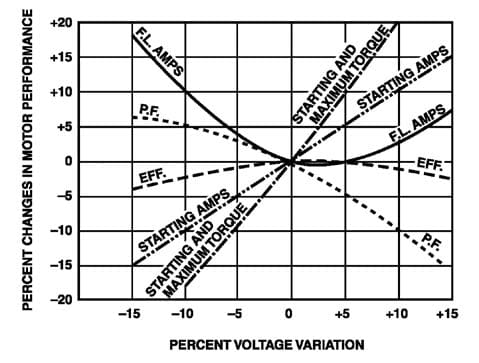Hi everybody
No-load & full-load currents of a new motor are too high. What can be the reason?
Motor is: 7.5kW, 50Hz, 4 pole, full load current as per nameplate is 15A, but it is actually 24A. Measured no-load current is 10A. Motor is new. I have checked the terminal box and certainly the power cable is connected correctly.
What may be wrong?
No-load & full-load currents of a new motor are too high. What can be the reason?
Motor is: 7.5kW, 50Hz, 4 pole, full load current as per nameplate is 15A, but it is actually 24A. Measured no-load current is 10A. Motor is new. I have checked the terminal box and certainly the power cable is connected correctly.
What may be wrong?

